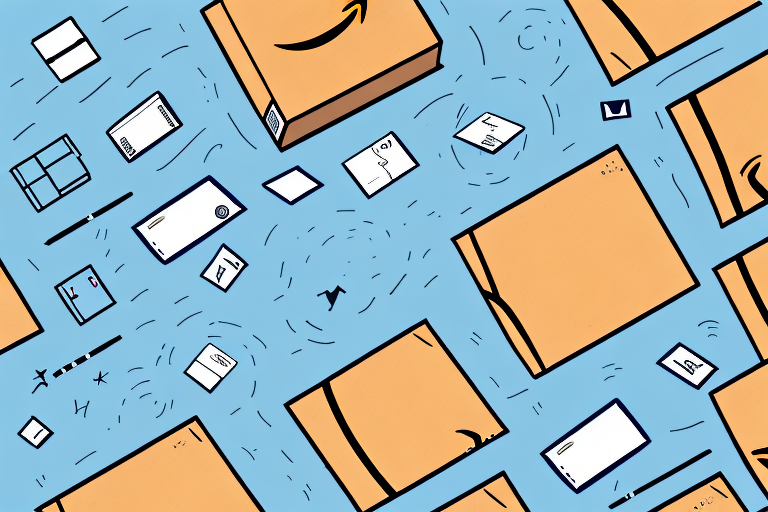Does Amazon Check Returned Items? Here’s What You Need to Know
Amazon is one of the world’s largest online retailers, selling millions of products to customers every day. Consequently, some of these products are returned for various reasons. If you’re a regular Amazon shopper, you might be wondering whether Amazon checks returned items before deciding whether or not to offer a refund. This guide provides in-depth analysis and answers to that question and many more.
The Amazon Return Policy: A Brief Overview
Amazon’s return policy allows most items to be returned within 30 days of receipt for a full refund. However, certain items may have different return periods or be ineligible for returns altogether, including hazardous materials, customized products, and certain health and personal care items. [Source: Amazon Return Policy]
Amazon also offers free returns for many items, simplifying the return process for customers. Additionally, the “Instant Refund” feature enables customers to receive their refund immediately upon initiating the return process, eliminating the need to wait for the item to be returned and processed. This feature is available for certain items and can be a convenient option for those needing a quick refund.
How Does Amazon Handle Returns?
To return an item to Amazon, follow the instructions on the website to initiate the process. This typically involves printing a shipping label and packing slip, then sending the item back to Amazon. Once Amazon receives the returned item, it usually takes 2-3 days for your refund to be processed.
Amazon maintains a customer-friendly return policy, allowing most items to be returned within 30 days of delivery. However, some exceptions apply, such as items marked as “final sale” or “non-returnable.” [Source: Amazon Return Policy]
When returning an item, you may be responsible for return shipping costs unless the item was defective or damaged. Additionally, if you received a damaged or defective item, you might be eligible for a replacement instead of a refund.
What Happens to Returned Items on Amazon?
The handling of returned items on Amazon depends on the item's category. Here’s a breakdown by category:
- Electronics: Amazon refuses to resell returned electronics as new. Instead, returned electronics undergo thorough inspection and testing to ensure they function properly. If they pass inspection, they are repackaged and sold as Amazon Renewed products at discounted prices. If they fail inspection, they are either sent back to the manufacturer for repair or responsibly disposed of. [Source: CNX Software]
- Clothing and Accessories: Returned clothing items are inspected for signs of wear or damage. If in good condition, they are steamed, repackaged, and resold as new. If not, they are donated to charity or recycled. [Source: Forbes]
How Does Amazon Determine Whether to Accept a Return?
When you return an item to Amazon, it is assessed by Amazon staff to ensure it meets the criteria for a refund. Returned items must be in new or like-new condition, including all original packaging, manuals, and accessories. Additionally, Amazon may consider the reason for the return and the customer's return history.
If a customer frequently returns items or has a history of abusing the return policy, Amazon may deny the return request. Furthermore, if the item was purchased from a third-party seller on Amazon, the seller’s return policy may apply instead of Amazon’s policy.
[Source: Business Insider]
Can You Return Anything on Amazon?
Not all items on Amazon are eligible for return. Some items that cannot be returned include:
- Hazardous materials
- Customized or personalized products
- Some health and personal care items
- Opened media items like CDs and DVDs
It’s important to check the specific return policy for each product before making a purchase, as some items may have shorter or longer return windows. While Amazon provides a hassle-free return process and may cover return shipping costs in some cases, understanding the return eligibility is crucial.
The Pros and Cons of Returning Items on Amazon
Pros:
- Convenient Process: Amazon makes it easy to initiate returns from your account and print shipping labels from home.
- Variety of Return Options: Options include drop-off at nearby locations or home pickup.
- Free Returns for Eligible Items: Prime members may be eligible for free returns on certain items.
Cons:
- Return Shipping Costs: Unless the item is defective or incorrect, you may need to cover return shipping.
- Account Restrictions: Frequent returns or policy abuse may lead to account restrictions or closure.
[Source: Consumer Reports]
What Are Your Options if Amazon Rejects Your Return?
If Amazon rejects your return request, you have several options:
- Appeal the Decision: Provide additional information or evidence, such as photos of the item, receipts, or other documentation to support your claim.
- Retry the Return: If you believe the initial rejection was in error, you may attempt to return the item again following guidelines closely.
- Sell the Item Elsewhere: If a refund is not possible, consider selling the item on Amazon (if allowed) or other platforms like eBay or Facebook Marketplace to recoup some costs.
How to Avoid Getting Your Returns Rejected by Amazon
To increase the likelihood of your return being accepted by Amazon, consider the following tips:
- Maintain Item Condition: Ensure the item is in new or like-new condition with all original packaging and accessories included.
- Clear Communication: Clearly and accurately explain the reason for your return to avoid confusion.
- Respect Return Windows: Make sure you return the item within the specified return window, typically within 30 days of delivery.
- Understand Return Restrictions: Be aware of any restrictions or exclusions for the item you’re returning, such as non-returnable items.
Tips for Making the Most of the Amazon Return Policy
Here are some strategies to optimize your experience with Amazon’s return policy:
- Take Advantage of Free Returns: If eligible, use Amazon’s free return shipping to save costs.
- Utilize Return Labels: Print return labels directly from your Amazon account to simplify the process.
- Keep Documentation: Retain receipts or order confirmations to support your return if needed.
- Check Return Deadlines: Monitor the return deadlines for each item to ensure compliance.
[Source: NY Times Wirecutter]
The Impact of Returning Items on Your Amazon Account
Frequent returns or abuse of the return policy can have several consequences for your Amazon account, including:
- Account Restrictions: Amazon may limit your ability to make purchases or impose stricter return scrutiny.
- Account Closure: Excessive returns or policy abuse may lead to account suspension or closure.
- Impact on Shopping Experience: A history of frequent returns can affect your eligibility for certain promotions, discounts, and personalized recommendations.
It’s important to use the return policy responsibly to maintain a positive shopping experience on Amazon.
The Future of Returns on Amazon: What to Expect
As e-commerce evolves, Amazon’s return policies and processes are likely to change. Some potential future developments include:
- Automated Returns Processes: Implementation of self-service kiosks and drone delivery to streamline returns.
- Sustainability Initiatives: Emphasis on sustainability and circular economy models to reduce waste associated with returns.
- Virtual Try-On Technology: Use of augmented reality to allow customers to visualize products before purchasing, reducing the likelihood of returns due to sizing or style issues.
- Personalized Recommendations: Offering more personalized product suggestions based on past purchases and return history to enhance customer satisfaction.
- Subscription-Based Services: Expansion of rental and styling services to minimize the need for returns by providing more tailored product offerings.
These advancements aim to enhance the customer experience, increase efficiency, and promote sustainability in the e-commerce space.
In conclusion, whether Amazon checks returned items depends on various factors, including the type of item and its condition upon return. Amazon inspects returned items to ensure they meet refund criteria, but the specific processes can vary widely. Understanding Amazon’s return policies and following best practices can help you navigate returns smoothly and avoid potential issues.
Looking ahead, technological innovations and evolving consumer preferences may further transform Amazon’s return policies and procedures, potentially offering more convenience and sustainability for both the company and its customers.



















